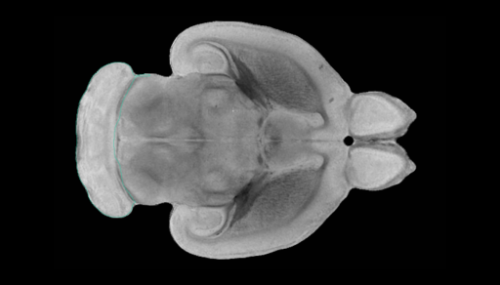March 31, 2015 report
Study shows female mammalian phenotype results from repression of male-linked genes by methylation

(MedicalXpress)—A team of researchers with the University of Maryland and Mt. Sinai School of Medicine has found that brain regions in female rodents associated with sexual behavior are feminized by repression of male-linked genes via methylation. In their paper published in the journal Nature Neuroscience, the team describes their study of the ways that rodent brains develop masculine or feminine traits, and what they learned by doing so.
Scientists know that there are gender differences between mammalian brains, most particularly in one region known as the preoptic area (POA)—prior research has shown that it is heavily involved in sexual behavior. But how does the brain develop either masculine or feminine traits? That was what the researchers were looking to learn.
Making the study a little easy was prior research that had discovered that genderizing the brain seems to occur late during development in the womb, and even for a little time period afterwards—that allowed the team to conduct studies of rat and mouse brains as gender was being imprinted.
In studying the chemical state of the POA during development, the team was able to confirm that the default state for the brain is female, thus something has to happen to cause male traits to come about for males and for female traits to be preserved during that process. That something is the unleashing of male hormones—if left undisturbed a rodent will develop male tendencies. In females, the team discovered, feminine traits are able to come about due to repression of male-linked genes by DNA methylation—one of the ways the body regulates expression of genes.
The team was able to show the impact of the male hormone on females by injecting it directly into the brains of mice right after birth—they found that doing so caused females to behave as males during copulation. They also found that they were able to disable the repression of the hormone produced naturally by the mice, which also resulted in the females exhibiting male mating behavior. On the other hand, the same procedures done on a mature female mouse had no impact at all.
The research by the team does not explain everything about gender brain development differences in rodents, of course, but it does help explain at least one part of the process and that should be a stepping stone for future research.
More information: Brain feminization requires active repression of masculinization via DNA methylation, Nature Neuroscience, DOI: 10.1038/nn.3988
Abstract
The developing mammalian brain is destined for a female phenotype unless exposed to gonadal hormones during a perinatal sensitive period. It has been assumed that the undifferentiated brain is masculinized by direct induction of transcription by ligand-activated nuclear steroid receptors. We found that a primary effect of gonadal steroids in the highly sexually dimorphic preoptic area (POA) is to reduce activity of DNA methyltransferase (Dnmt) enzymes, thereby decreasing DNA methylation and releasing masculinizing genes from epigenetic repression. Pharmacological inhibition of Dnmts mimicked gonadal steroids, resulting in masculinized neuronal markers and male sexual behavior in female rats. Conditional knockout of the de novo Dnmt isoform, Dnmt3a, also masculinized sexual behavior in female mice. RNA sequencing revealed gene and isoform variants modulated by methylation that may underlie the divergent reproductive behaviors of males versus females. Our data show that brain feminization is maintained by the active suppression of masculinization via DNA methylation.
© 2015 MedicalXpress.com



















